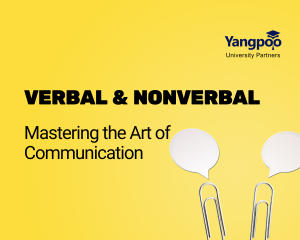In the competitive world of management entrance exams, CAT vs CMAT (Common Management Admission Test) stands out as two of the most critical exams for aspiring MBA students in India. While both exams serve as gateways to top-tier business schools, they come with their own unique structures, eligibility criteria, and preparation strategies. Let’s dive into the key aspects of both exams and explore how to prepare effectively for success. But CAT or CMAT, which is better? This depends on individual goals and the type of institutions you aim to apply for
What is CAT Exam ?
The Common Admission Test (CAT) is a national-level entrance exam conducted annually by the Indian Institutes of Management (IIMs). It is the most valuable exam for MBA aspirants, serving as a pathway to prestigious institutions like all 21 IIMs and over 1,000 other MBA colleges across India.
Colleges and Programs Accepting CAT Scores
Top Colleges Accepting CAT Scores
Indian Institutes of Management (IIMs)
- All 20 IIMs are among the premier institutions accepting CAT scores. Some notable IIMs include:
- IIM Ahmedabad
- IIM Bangalore
- IIM Calcutta
- IIM Lucknow
- IIM Indore
These institutes typically have high cut-off percentiles, often ranging from 98 to 100
Several IITs also accept CAT scores for their management programs:
IIT Delhi
IIT Bombay
IIT Kharagpur
These institutions are known for their rigorous academic standards and excellent placement records
Top Private MBA Colleges
Numerous private institutions also consider CAT scores, including:
- SP Jain Institute of Management & Research, Mumbai
- Management Development Institute (MDI), Gurgaon
- Institute of Management Technology (IMT), Ghaziabad
- Xavier Institute of Management, Bhubaneswar (XIMB)
- Great Lakes Institute of Management, Chennai
These colleges often have varying cut-offs depending on the program and applicant profile.
What is CMAT Exam?
The Common Management Admission Test (CMAT) is a national-level entrance exam in India, conducted by the National Testing Agency (NTA). It serves as a gateway for admission to MBA and PGDM programs at various institutions approved by the All India Council for Technical Education (AICTE).
Exam Structure
- Mode: Computer-based test
- Duration: 3 hours (180 minutes)
- Total Questions: 100 multiple-choice questions (MCQs)
- Sections:
- Quantitative Techniques & Data Interpretation.
- Logical Reasoning.
- Language Comprehension
- General Awareness.
- Innovation & Entrepreneurship
Eligibility for CAT
- A bachelor’s degree with at least 50% marks (45% for reserved categories)
- Final-year students can apply provisionally.
– Colleges and Programs Accepting CMAT Scores
The Common Management Admission Test (CMAT) is accepted by a wide range of MBA colleges across India. Here’s an overview of some of the top colleges and programs that accept CMAT scores for admission in 2024.
Top Colleges Accepting CMAT Scores
- Major Institutions
- JBIMS, Mumbai
- KJ Somaiya Institute of Management Studies and Research, Mumbai
- Great Lakes Institute of Management, Chennai
- Goa Institute of Management, Goa
- Birla Institute of Management Technology (BIMTECH), Greater Noida
- Other Notable Colleges
- Amity University, Noida
- Delhi School of Business, Delhi
- IFMR Graduate School of Business, Chennai
- Woxsen University, Hyderabad
- Indus Business Academy, Bangalore
Prominent government colleges accepting CAT scores include:
Faculty of Management Studies (FMS), University of Delhi
NITIE, Mumbai
Indian Institute of Forest Management, Bhopal
Key Differences Between CAT and CMAT
| Feature | CAT | CMAT |
|---|---|---|
| Conducting Body | IIMs | NTA |
| Eligibility | Bachelor’s degree with 50% | Bachelor’s degree in any field |
| Exam Date | Last Sunday of November | Typically in January |
| Fees | Approx. ₹2,200 | Approx. ₹2,000 |
| Number of Questions | 66 | 100 |
| Syllabus Focus | Management aptitude | General awareness + management |
| Mode of Exam | Computer-based | Computer-based |
While these key differences between CAT and CMAT highlight the distinct nature of the exams, they also share several similarities that can help candidates streamline their preparation strategies. Here’s a detailed comparison of the similarities between CAT and CMAT to guide your approach.
Similarities Between CAT and CMAT
| Component | Details |
|---|---|
| Exam Mode | Both are conducted as online, computer-based tests. |
| Exam Medium | The medium of instruction for both exams is English. |
| Frequency | Both exams are conducted once a year. |
| Level of Exam | They are both national-level entrance exams, accepted by numerous institutions across India. |
| Course for Admission | Both exams primarily cater to admissions for MBA and PGDM programs. |
| Negative Marking | Each exam penalizes incorrect answers, with a negative marking scheme (CMAT: -1 mark, CAT: -1 mark for MCQs). |
| Syllabus Overlap | Many sections overlap in content, particularly in areas like quantitative aptitude and logical reasoning, |
CAT vs CMAT – Exam Pattern
The Common Admission Test (CAT) and the Common Management Admission Test (CMAT) are both significant entrance exams for MBA aspirants in India. While they serve similar purposes, their exam patterns differ in several key aspects.
Exam Pattern Comparison: CAT vs. CMAT
| Aspect | CAT | CMAT |
|---|---|---|
| Conducting Body | Indian Institutes of Management (IIMs) | National Testing Agency (NTA) |
| Exam Duration | 120 minutes | 180 minutes |
| Total Questions | 66 questions | 100 questions |
| Sections | 3 sections: | 5 sections: |
| – Verbal Ability and Reading Comprehension | – Quantitative Techniques & Data Interpretation | |
| – Data Interpretation & Logical Reasoning | – Logical Reasoning | |
| – Quantitative Ability | – Language Comprehension | |
| – General Awareness | ||
| Number of Questions per Section | Varies by section (e.g., 24 in VARC) | 20 questions per section |
| Marking Scheme | +3 for correct answers, -1 for incorrect answers; no negative marking for Type In The Answer (TITA) questions. | +4 for correct answers, -1 for incorrect answers. |
| Question Types | MCQs and TITA | MCQs |
| Sectional Time Limit | Yes, 40 minutes per section | No sectional time limit |
| Section | Number of Questions | Total Marks |
|---|---|---|
| CAT | ||
| Verbal Ability & Reading Comprehension | 24 | 72 |
| Data Interpretation & Logical Reasoning | 32 | 96 |
| Quantitative Ability | 34 | 102 |
| CMAT | ||
| Quantitative Techniques | 25 | 100 |
| Logical Reasoning | 25 | 100 |
| Language Comprehension | 25 | 100 |
| General Awareness | 25 | 100 |
Preparing for both the Common Admission Test (CAT) and the Common Management Admission Test (CMAT) simultaneously can be a strategic approach for MBA aspirants. Here’s a comprehensive guide on how to effectively manage preparation for both exams.
Key Strategies for Simultaneous Preparation
- Understand the Exam Patterns
- Sections:
- CAT has three sections: Verbal Ability and Reading Comprehension, Data Interpretation & Logical Reasoning, and Quantitative Ability.
- CMAT includes five sections: Quantitative Techniques & Data Interpretation, Logical Reasoning, Language Comprehension, General Awareness, and Innovation & Entrepreneurship.
- 2. Create a Unified Study Plan
Syllabus Breakdown: Divide the syllabus into manageable parts, focusing on overlapping topics such as Quantitative Ability and Logical Reasoning.
Weekly Schedule: Allocate specific days for each exam’s sections. For example:
Monday/Wednesday: CAT Quantitative Ability
Tuesday/Thursday: CMAT Quantitative Techniques
Friday: Verbal Ability for both exams
Daily Goals: Set daily targets for topics to cover and practice questions.
- Focus on Concept Clarity
Build a strong foundation in core concepts that are common to both exams, especially in quantitative sections.
Use resources like textbooks and online courses to strengthen your understanding of fundamental concepts.
- Practice Mock Tests
Regularly take mock tests for both exams to familiarize yourself with the format and timing.
Analyze your performance after each test to identify weak areas and adjust your study plan accordingly.
Conclusion
Both the CAT and CMAT exams are important stepping stones for gaining admission into India’s leading business schools. While CAT leans more toward management aptitude, CMAT includes a broader focus with general awareness. With the right preparation strategy, you can tackle both exams confidently and increase your chances of securing a spot in a top-tier MBA progra
FAQ
1.Is CMAT easier than CAT?
Yes, CMAT is generally considered easier than CAT due to its moderate difficulty level and lack of sectional time limits.
2.Is the syllabus for CMAT and CAT the same?
While both exams cover similar areas like Verbal Ability and Quantitative Ability, CMAT includes a General Awareness section that CAT does not.
3.Can I get into IIMs by taking CMAT?
No, IIMs only accept CAT scores for admission; CMAT scores are not valid for IIMs.
4.Which colleges accept CMAT vs. CAT?
IIMs and top institutes like FMS accept CAT scores, while colleges like K.J. Somaiya and IMT Ghaziabad accept CMAT scores.
Can I pursue an MBA without taking CMAT?
Yes, you can pursue an MBA through other entrance exams like CAT, XAT, MAT, or GMAT.
5.Which is the toughest subject in the CAT exam?
Quantitative Ability is often considered the toughest subject in the CAT exam due to its complex mathematical concepts.





